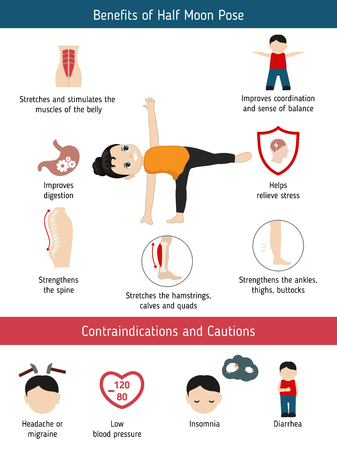1. Initial Assessment and Collaborative Care
Overview of Patient Evaluation Post-Fracture
When a patient arrives for physical therapy after a long bone fracture, the first step is a thorough evaluation. This process is crucial to ensure safe and effective recovery. In US clinical settings, physical therapists start by gathering important background information and reviewing medical records.
Key Steps in Initial Assessment
| Step | Description |
|---|---|
| Patient History | Ask about how the injury happened, previous activity level, pain location and intensity, and any relevant health conditions (like diabetes or osteoporosis). |
| Imaging Review | Review X-rays, CT scans, or MRI reports to understand the type and location of fracture, healing progress, and any surgical interventions (such as plates or rods). |
| Physical Examination | Check range of motion, muscle strength, swelling, sensation, and circulation in the affected limb. Observe gait and posture if weight-bearing is allowed. |
Collaborative Care with Orthopedic Teams
In American clinical practice, physical therapists work closely with orthopedic surgeons and other healthcare providers. This teamwork ensures that everyone is on the same page regarding weight-bearing restrictions, precautions, and timelines for rehabilitation. Regular communication—often through electronic medical records or team meetings—helps adjust care plans as the patient heals.
Developing Individualized Care Plans
No two patients are exactly alike. Based on the assessment and collaboration with doctors, physical therapists create personalized treatment plans. These plans consider:
- The specific bone fractured (like femur, tibia, or humerus)
- Surgical versus non-surgical management
- Patient’s age, activity level, and personal goals
- Any risk factors that may affect healing (e.g., smoking or chronic illness)
This individualized approach helps maximize recovery while keeping safety at the forefront in every phase of rehabilitation.
2. Pain Management and Early Mobilization
Understanding Acute Pain After Long Bone Fractures
Pain is a common experience after long bone fractures, especially in the first few days following an injury or surgery. Managing this pain effectively is important because it helps patients start moving sooner, which supports a faster and safer recovery.
Common Strategies for Acute Pain Management
In US clinical settings, therapists and doctors use a combination of approaches to help manage pain while keeping patients comfortable and motivated. Here’s a simple overview:
| Pain Management Strategy | Description | When Used |
|---|---|---|
| Medications | Includes acetaminophen, NSAIDs, and sometimes short-term opioids (always under medical supervision) | Immediately after injury or surgery, then gradually reduced |
| Ice Therapy | Applying ice packs to reduce swelling and numb the area | First 48-72 hours after injury or surgery |
| Elevation | Keeping the injured limb raised above heart level to decrease swelling | Early recovery phase, as needed for comfort |
| Nerve Blocks/Local Anesthetics | Temporary numbing injections around nerves near the fracture site (done by doctors) | Mainly during or right after surgical repair, if appropriate |
| Gentle Movement Techniques | Slight range-of-motion exercises guided by a physical therapist to avoid stiffness without causing more pain | As soon as medically safe and cleared by the care team |
The Importance of Early Mobilization in US Rehab Settings
Physical therapists in the United States emphasize starting gentle movements early—often within a day or two after surgery or stabilization—if the doctor says it’s safe. Early mobilization can mean:
- Sitting up in bed with assistance
- Dangling legs off the side of the bed
- Moving joints above and below the fracture site to prevent stiffness
- Starting weight-bearing activities when allowed (sometimes with crutches or walkers)
- Practicing breathing exercises to prevent lung complications, especially after longer hospital stays
The Benefits of Safe, Controlled Movement Early On:
- Lowers risk of blood clots and pneumonia
- Prevents muscle wasting and joint stiffness
- Keeps circulation healthy for better healing at the fracture site
- Boosts confidence and independence in daily activities sooner
- Makes it easier to progress to more advanced rehab later on
Your Physical Therapist’s Role:
A licensed physical therapist will work closely with your medical team to create a plan that balances pain relief with the right amount of movement. They’ll also teach you strategies for managing discomfort at home so you can stay active and positive about your recovery journey.
![]()
3. Progressive Strengthening and Range of Motion
After a long bone fracture, restoring strength and flexibility is crucial for regaining independence and returning to daily activities. In US clinical settings, therapists follow evidence-based guidelines that match the patient’s healing stage and personal goals. This ensures safety while promoting steady progress.
Guiding Principles for Progressive Strengthening
Physical therapy starts with gentle movements and gradually adds resistance as the bone heals. The process is designed to avoid overloading the injured area too soon. Therapists often use functional tasks and exercises that match the patient’s lifestyle, such as climbing stairs or lifting groceries.
| Healing Stage | Recommended Exercises | Frequency |
|---|---|---|
| Early (Weeks 1-4) | Passive range of motion, isometric contractions | 1-2 times per day |
| Mid (Weeks 5-8) | Active range of motion, light resistance bands | 3-5 times per week |
| Late (Weeks 9+) | Progressive weights, functional activities (e.g., sit-to-stand) | Daily or as tolerated |
Range of Motion: Building Flexibility Safely
Regaining joint mobility is just as important as building strength. Therapists encourage patients to move within pain-free ranges, slowly increasing motion as swelling and stiffness decrease. Common techniques include:
- Stretching: Gentle static stretches to prevent muscle tightness.
- Joint mobilization: Hands-on techniques by therapists to improve movement.
- Home exercise programs: Simple routines patients can do on their own between visits.
The American Approach: Patient-Centered Care
In the US, therapists emphasize shared decision-making and goal setting. Each plan is customized—whether the patient wants to return to sports, work, or just walk without pain. Education about pacing, safe progression, and listening to your body are core values in American rehab culture. Regular check-ins help adjust exercises based on healing progress, ensuring optimal recovery every step of the way.
4. Patient Education and Home Exercise Programs
Culturally Sensitive Patient Education
After a long bone fracture, it’s important for patients to understand how to care for themselves at home. In US clinical settings, physical therapists provide education that respects different cultural backgrounds and beliefs. This means using simple language, avoiding medical jargon, and making sure instructions fit each patient’s lifestyle, work schedule, and family roles. Therapists may use visual aids or interpreters when needed. The goal is to empower patients with information about their recovery process.
Key Topics in Patient Education
| Topic | What Patients Learn |
|---|---|
| Self-Care | How to keep the cast or brace clean, when to call the doctor, and how to manage swelling or pain at home. |
| Injury Precautions | Which activities are safe or unsafe, signs of complications (like infection or blood clots), and ways to prevent re-injury. |
| Daily Life Adjustments | Tips for bathing, dressing, driving, and returning to work or school safely during recovery. |
Home Exercise Programs Tailored to US Lifestyles
Physical therapists design home exercise regimens that match each patient’s goals and daily routines. For example, someone who enjoys walking their dog will get exercises that help them return to this activity safely. Therapists consider common American lifestyles—like working at a desk job or participating in recreational sports—when recommending exercises.
Sample Home Exercise Program Structure
| Exercise Type | Purpose | Frequency | Lifestyle Example |
|---|---|---|---|
| Range of Motion (ROM) | Restore joint movement after immobilization | 2-3 times/day | Reaching overhead in kitchen cabinets |
| Strengthening Exercises | Build muscle around the injured area | Every other day as tolerated | Lifting grocery bags safely |
| Functional Training | Practice everyday movements safely | Daily practice as able | Sit-to-stand from a chair, getting into/out of a car |
| Pain & Swelling Management Techniques | Reduce discomfort and improve healing | As needed throughout the day | Icing after activity, elevating the limb while watching TV or reading |
Tips for Success with Home Programs in the US Setting:
- Set reminders on your phone or calendar to do exercises regularly.
- If you have questions or notice increased pain, contact your physical therapist promptly.
- Ask your therapist for written instructions or video demonstrations if you learn better visually.
- If family members help with care, include them in therapy sessions or educational meetings.
This approach makes recovery more manageable and helps patients achieve their personal goals while respecting their unique backgrounds and daily routines.
5. Discharge Planning and Long-term Follow-up
Best Practices for Determining Readiness for Discharge
In the US, effective discharge planning after long bone fractures is a team effort between physical therapists, doctors, patients, and families. The primary goal is to ensure the patient can safely continue their recovery at home or in an outpatient setting. Here are key factors clinicians use to decide if a patient is ready for discharge:
| Criteria | Description |
|---|---|
| Mobility | Patient can move safely with or without assistive devices (walker, crutches). |
| Pain Management | Pain is controlled enough to allow participation in daily activities. |
| Self-care Skills | Patient can manage basic activities (dressing, bathing) independently or with minimal help. |
| Home Safety | Home environment is assessed and modified if needed for safety (ramps, grab bars). |
| Education | Patient and family understand home exercise program and precautions. |
Coordinating Ongoing Outpatient Therapy
After discharge from inpatient care, most patients will need outpatient physical therapy to continue progress. In the US, this transition is carefully coordinated. Therapists provide a written summary of progress and recommendations to the outpatient team. Scheduling follow-up appointments in advance helps keep patients on track. Clear communication ensures everyone understands the goals for continued rehab.
Common Outpatient Therapy Focus Areas:
- Restoring joint mobility and strength
- Improving balance and gait (walking)
- Pain management strategies for home use
- Gradual return to work or recreational activities
- Monitoring for signs of complications or setbacks
Monitoring for Complications or Delayed Healing
Long-term follow-up is crucial because complications like infection, hardware issues, or delayed bone healing can occur weeks or months after initial treatment. Physical therapists in the US routinely monitor patients for warning signs that need quick medical attention.
Table: Warning Signs to Watch For After Long Bone Fractures
| Warning Sign | What To Do |
|---|---|
| Increased pain/swelling/redness at fracture site | Contact your healthcare provider immediately. |
| Trouble moving limb or bearing weight suddenly worsens | Seek medical evaluation quickly. |
| Numbness or tingling not previously present | Mention at next visit; urgent if severe/sudden onset. |
| Fever over 101°F (38.3°C) | This may signal infection—call your doctor. |
| Poor wound healing or drainage from surgical site | Notify your care team as soon as possible. |
Key Takeaway:
A successful recovery after a long bone fracture doesn’t end at discharge from the hospital or rehab center. With good planning, teamwork, and regular check-ins, most patients can get back to their daily lives safely and confidently. Physical therapists play an ongoing role in educating patients, supporting independence, and watching out for any problems down the road.


